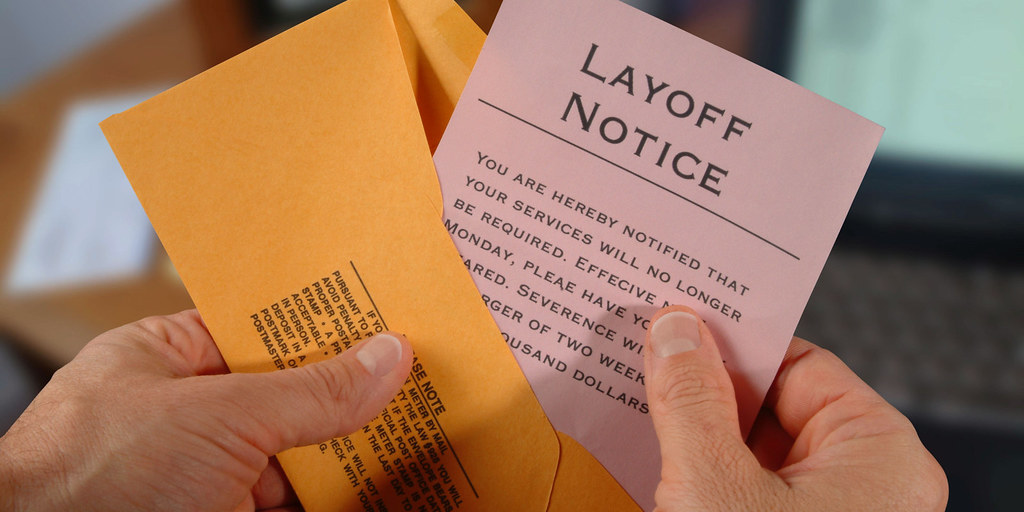Difference Between Furlough and Layoff
Sometimes, under certain unusual circumstances, industries and organizations are faced with the economic need to downsize their workforce in order to cut costs. While some industries are forced into temporary suspending activities, this may cause them to let go of their employees. In such cases, an employer has either of the two options to choose from – a layoff or a furlough. While some companies choose to lay-off their staff in order to cut costs quickly, many companies go for a furlough instead, which means suspending the work of the staff temporarily with or without pay. However, understanding the difference between a furlough and a layoff can be quite complicated. We’ve got you covered.

What is a Layoff?
Layoff is a temporary or permanent discharge of an employee, or more commonly, a group of employees in order to cut some dead weight. A layoff may be a temporary suspension or a permanent termination of an employee, for reasons other than an employee’s work performance. It’s a mandatory termination of the employment status of an active employee or worker for any number of reasons, such as economic downturns, downsizing, and personnel management. Sometimes workers are also laid off because their employer has moved or closed permanently and there was not sufficient work for them to do or the position was not required anymore. Mostly, layoffs occur when a company decides it must make reduce workforce to meet strategic needs or financial challenges. However, a layoff is not the same as outright termination because of an employee’s inefficiency or breach of duty.

What is a Furlough?
Furlough is an alternative to a layoff which means temporary placement of an employee in a non-duty, non-pay status. Furlough is also a cost-saving measure taken by industries due to economic conditions when it does not want to let go off the employees permanently but does not have the resources or funds to continue paying them either. It is a temporary leave of absence granted to government or institutional employees with an option to keep them on the payroll without them working. There are many different situations under which furlough may be used, which include unforeseen circumstances such as equipment failure, or acts of God, or other emergencies that would require immediate suspension of activities. Furlough is a temporary measure designed to take care of short-term situations with the intention of retaining the staff. It is similar to a layoff in that it’s a desperate measure to cut costs, but with an exception of workers remain employed with less pay or without pay.
Difference between Furlough and Layoff
Meaning
– A layoff is a temporary or permanent discharge of an employee, or more commonly, a group of employees in order to meet a company’s strategic needs or financial challenges. Layoffs are redundancies in place and the decision is taken by the upper management with approval of the board of directors. Layoffs are mostly used as a measure of last resort. A furlough, on the other hand, is a temporary leave of absence granted to government or institutional employees with an option to keep them on the payroll without them working.
Work Rule
– Furlough is similar to a layoff in that it’s a desperate measure to cut costs, but with an exception of workers remain employed with less pay or without pay. Furloughs are temporary designed to take care of short-term situations with the intention of retaining the staff. Furlough may be either reduction of hours with limited pay or no work without pay. For the salaried staff, the rules of furlough allow the employers to reduce the pay for less working hours clocked if it’s a long-term plan. Layoff, on the other hand, is a strict no-work rule for reasons other than an employee’s work performance.
Employment/Unemployment Benefits
– A furlough, unlike layoff, tells employees that each of them has value and is valued, and they are doing everything they can to keep them employed. When the employees are furloughed, in general, they are typically allowed to retain their employee benefits. This means furloughed employees cannot be fired during the set period and they can usually avail benefits such as health and life insurance in case of emergencies, or avail unemployment benefits during a furlough of any kind. For example, a short-term furlough of let’s say five-days in succession may meet the requirements to qualify for unemployment benefits.
Furlough vs. Layoff: Comparison Chart

Summary
Well, there can be many reasons an employee or a group of employees is allowed to let go, which may include economic downturns, downsizing, and personnel management. Depending upon the circumstances, they are either laid off or furloughed. Most companies use layoff as a last resort. Layoff regulations vary across countries. In some countries, layoffs can be a seamless process, but in many countries, legal constraints make it virtually impossible to layoff workforce. A furlough, however, sends a different message placing the employees under a temporary placement of non-duty while keeping them on the payroll without them working. Furlough is the preferred means to reduce operational costs during economic downturns and is also easier to recover from.
- Difference Between Caucus and Primary - June 18, 2024
- Difference Between PPO and POS - May 30, 2024
- Difference Between RFID and NFC - May 28, 2024
Search DifferenceBetween.net :
Leave a Response
References :
[0]Image credit: https://live.staticflickr.com/7766/26300909523_9100029606_b.jpg
[1]Image credit: https://live.staticflickr.com/65535/49741912567_14d6997d10_b.jpg
[2]Laying Off Employees. Boston, Massachusetts: Harvard Business Press, 2009. Print
[3]Hyman, Jonathan T. The Employer Bill of Rights: A Manager's Guide to Workplace Law. New York, United States: Apress, 2013. Print
[4]Notestine, Kerry E. et al. Fundamentals of Employment Law (Second Edition). Chicago, Illinois: ABA Publishing, 2000. Print
[5]Busse, Richard C. Fired, Laid Off or Forced Out: A Complete Guide to Severance, Benefits, and Your Rights when You're Starting Over. Naperville, Illinois: Sphinx Publishing, 2005. Print
